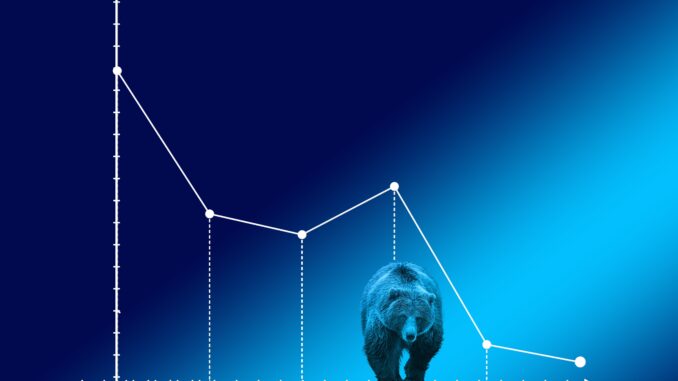
A stock exchange or securities exchange is a facility where stock brokers and traders can buy and sell securities, such as shares of the company, Bonds, Commodities, and other financial instruments. Stock exchanges also provide facilities for the issue and redemption of such securities and instruments and capital events including the payment of income and dividends.
Securities traded on a stock exchange include stock issued by listed companies, unit trusts, derivatives, pooled investment products, and bonds. Stock exchanges often function as “continuous auction” markets with buyers and sellers using an electronic trading platform.
Brief History of Stock Exchange:
- 1300 AD Venetian moneylenders began to sell debt issues to other lenders and to individual investors.
- 1500 AD Belgium’s exchange dealt exclusively with promissory notes and bonds.
- 1531 AD First Stock Exchange in Antwerp a city in Belgium. Moneylenders and Brokers would meet here to have a business deal in Government Bonds and Promissory notes
- 1602 AD the world’s first formal stock exchange was created, the Amsterdam Stock Exchange, this stock exchange initially promoted the trading of securities issued by the Dutch East India Company, this was the first company to issue corporate bonds and stock to the public.
- The New York Stock Exchange Established in 1792 in New York.
- 1971 NASDAQ formed in New York, It started to trade securities electronically.
Indian Stock Market:
Security trading in India goes back to the 18th century when the East India Company began trading in loan securities. Corporate shares started being traded in the 1830s in Bombay with the stock of Bank and Cotton presses. The simple and informal beginnings of stock exchanges in India take one back to the 1850s. Initially there were only two stock exchanges operating one in Mumbai and the other in Ahmedabad. They were controlled under the terms and conditions of the constitution.
The Bombay Stock Exchange was recognized in India in 1937 and Ahmedabad Stock Exchange was recognized in India in 1937 under the Bombay Securities Contracts (Control Act). The Securities Contract Regulation Act of 1956 controls the stock exchanges.
Bombay Stock Exchange
Bombay Stock exchange is the oldest stock exchange in Asia. It has a successful history of rich heritage. Now it is popularly known as “BSE” Initially 22 stockbrokers began trading opposite the Town Hall of Bombay under a banyan tree. The tree still stands in the area which is now known as Horniman Circle.
The venue then shifted to banyan trees at the Meadows Street junction, which is now known as Mahatma Gandhi Road, a decade later. The shift continued taking place as the number of brokers increased, finally settling in 1874 at what is known as Dalal Street.
The Native Share and Stockbrokers Association organized themselves as the Bombay Stock Exchange (BSE) in 1875. The BSE is the oldest stock exchange in Asia and was the first to be granted permanent recognition under the Securities Contract Regulation Act, 1956.BSE introduced an electronic trading system known as BSE On-line Trading (BOLT) in 1995.
Now BSE has 5,439 Companies listed with Market Cap ₹151,970.87 billion as of March 2019. Indices: BSE SENSEX, S&P BSE Smallcap, S&P BSE MidCap, S&P BSE LargeCap, BSE 500. The BSE Index particularly SENSEX is India’s First stock market Index that enjoys an Iconic Stature, and is tracked worldwide. BSE Sensex is an Index of 30 stocks representing 12 Major sectors. “Free-Float” Methodology is used in the construction of SENSEX.
National Stock Exchange
National Stock Exchange (NSE). It was incorporated in 1992, became recognized as a stock exchange in 1993, and trading began on it in 1994. It was the first stock exchange on which trading took place electronically.
After the Harshad Mehta scam in 1992, there was a pressing need for another stock exchange large enough to compete with the BSE and bring transparency to the stock market. The former UTI Chairman M.J Pherwanyi headed the committee to examine the need for the establishment of NSE. The committee gave the following reasons for the Establishment of NSE.
- The existing system is devoid of the transparency with the result that the investor is losing confidence in the stock market.
- The Outdated settlement is unable to overcome with the fast-growing volume of business so that inordinate delay and low liquidity.
- BSE failed to give shape to the well-evolved debt market
- There was No electronic trading system.
These gave the path to form NSE with an equity base capital of Rs.25 Crores. The IDBI, ICICI, LIC, GIC and its subsidiaries, SBI and SBI Capital Market Ltd to promote the National Stock Exchange.
The Multi Commodity Exchange of India
The Multi Commodity Exchange of India (MCX) is India’s largest derivatives and commodities exchange. Launched in 2003, MCX offers futures and options contracts on base and precious metals, energies and agricultural commodities. The exchange was the first marketplace to go public in India with an IPO in February 2012.
According to the annual Futures Industry Association’s survey of the world’s derivatives exchanges in 2018, the Multi Commodity Exchange of India was ranked 20th by volume, with 230 million contracts traded on the exchange, up 15.9 percent from a year earlier.

Stock Market Crashes in India:
The Two Major Stock Exchange of India NSE and BSE have seen both bull and bear market in a long period since its establishment. The sudden movement to the Bear market with Hugh Fall is known as a Stock market crash. The following are some stock market crashes in the Indian Stock Market.
- The Crash Of 1991: This was the first stock market crash in India. After the establishment of BSE, a previous crash during 1865 due to the American Civil war was not well documented has it was just speculation in a market. In 1991 the first crash was due to global events and it was the first Bear Market in the Indian Stock Market.
- The Crash Of 1992: 28-April-1992 The BSE experienced a fall of 12.77% due to the Harshad Mehta Scam.
- The Crash Of 2004: 17-May-2004 The BSE experienced a fall of 15.52% due to election win by the Indian National Congress.
- The Crash Of 2007:
- 2 April 2007: The Sensex fell by 617 points due to the Reserve Bank of India decision to hike the cash reserve ratio and repo rate.
- 1 August 2007: The Sensex continued to fall and finally settled at 14,936 while the nifty fell by 183 points to 4,346 due to weak trend in the global market.
- The Crash Of 2008:
- 21 Jan 2008, the BSE fell by 1408 points to 17,605 leading to one of the largest erosions in investor wealth.
- 24 October 2008, the BSE Sensex fell to 8701, a fall of 1070 points in a single day. US Financial crisis had pulled the market down badly in 2008.
- The Crash Of 2016:
- The Sensex fell by 6% to 26,902 and the Nifty dropped by 541 points to 8002. Demonetization announced by Modi Government. The fall was concurrent with falls in other Asian stock markets including the Hang Seng, Nikkei, and the Shanghai Composite. The S&P had also fallen by 4.45%.
- The Crash Of 2020:
- On 23 March 2020, Sensex lost 3,934.72 points (13.15%) and Nifty plunges 1,135 points (12.98%) at 7610.25 as coronavirus-led lockdowns across the world triggered fears of a recession. These are now the lowest levels since 2016. It’s witnessing the biggest weekly loss since October 2008.

Leave a Reply